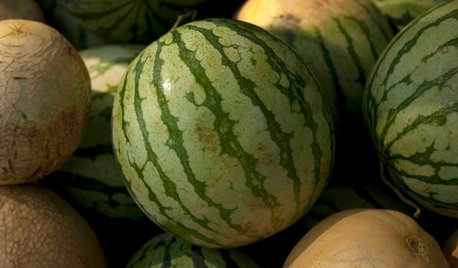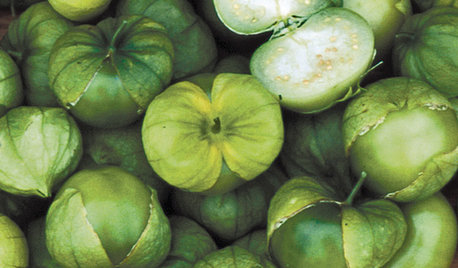climate change and crops
11 years ago
Related Stories

SPRING GARDENINGSummer Crops: How to Grow Strawberries
Pluck your own sweet strawberries right from the garden vine for smoothies, salads or eating then and there
Full Story
GARDENING GUIDESSummer Crops: How to Grow Melons
Drink in the refreshing sweetness of melons from your own garden this summer — they can last well into fall too
Full Story
EDIBLE GARDENSSummer Crop: How to Grow Blueberries
Plant blueberries in spring or fall for garden beauty through three seasons — and a sweet superfood in summer
Full Story
EDIBLE GARDENSSummer Crops: How to Grow Tomatoes
Plant tomato seedlings in spring for one of the best tastes of summer, fresh from your backyard
Full Story
SUMMER FRUITS AND VEGETABLESHow to Grow Your Own Fresh, Sweet Corn
Here's how to plant and care for your own mini cornfield
Full Story
SUMMER FRUITS AND VEGETABLESSummer Crops: How to Grow Tomatillos
Grow this Mexican native for the freshest salsa verde — and for fewer problems than its tomato cousins
Full Story0

FARM YOUR YARDIf You Have Room for Only One Summer Crop ...
Get an edible that’s long on flavor even if you’re short on space, with a long-time gardener’s favorite picks
Full Story
EDIBLE GARDENSSummer Crops: How to Grow Squash
Almost foolproof and with cheerful flowers, squash comes in a wide range of varieties to plant in spring
Full Story
SUMMER FRUITS AND VEGETABLESSummer Crops: How to Grow Beans
Grow your own beans for amazing variety and healthy, convenient produce all summer
Full Story
GARDENING AND LANDSCAPINGCream-of-the-Crop Vegetable Gardens
Both trendy and traditional, these inspired potager designs turn the everyday vegetable garden into art for your landscape
Full Story
Sponsored





glib
pnbrownOriginal Author
Related Discussions
Climate change, right here at home
Q
The bugs are coming, due to Climate Change
Q
Climate Change...Can we change with it. Maybe for the better?
Q
Climate change is coming for your pizza sauce
Q
jonfrum
glib
farmerdill
pnbrownOriginal Author
gardenlen
User
RpR_
User
pnbrownOriginal Author
User
naturegirl_2007 5B SW Michigan
pnbrownOriginal Author
sunnibel7 Md 7
pnbrownOriginal Author
RpR_
pnbrownOriginal Author
elisa_z5
jolj
soilent_green
User
User
cheapheap
zeedman Zone 5 Wisconsin
pnbrownOriginal Author
User